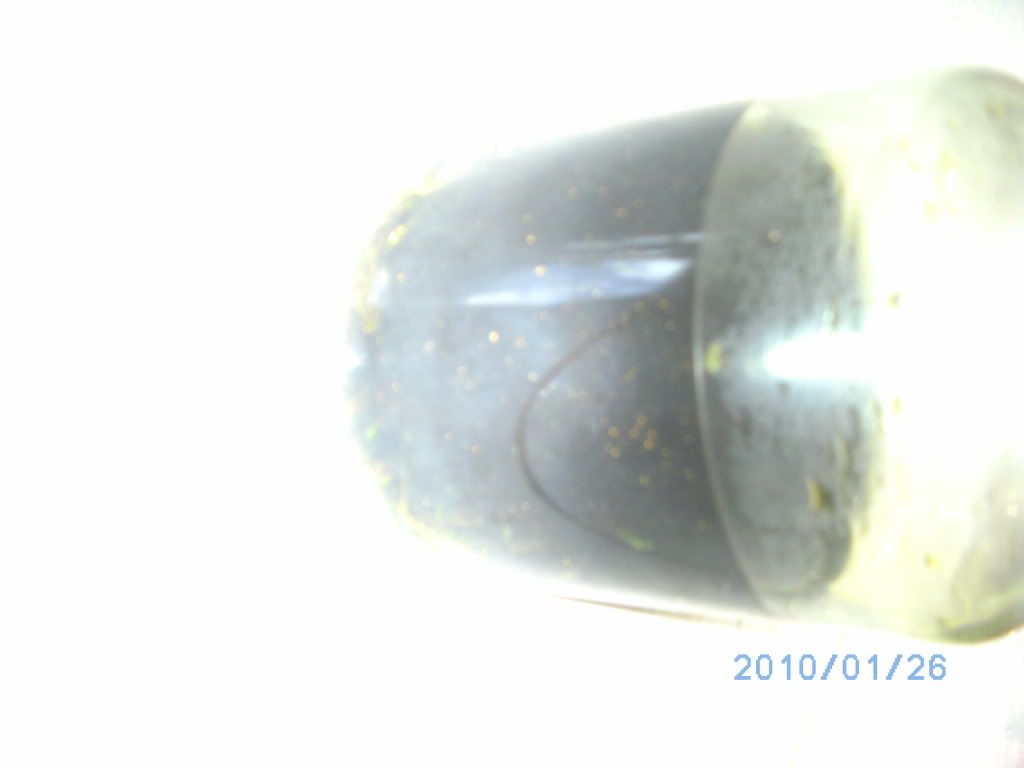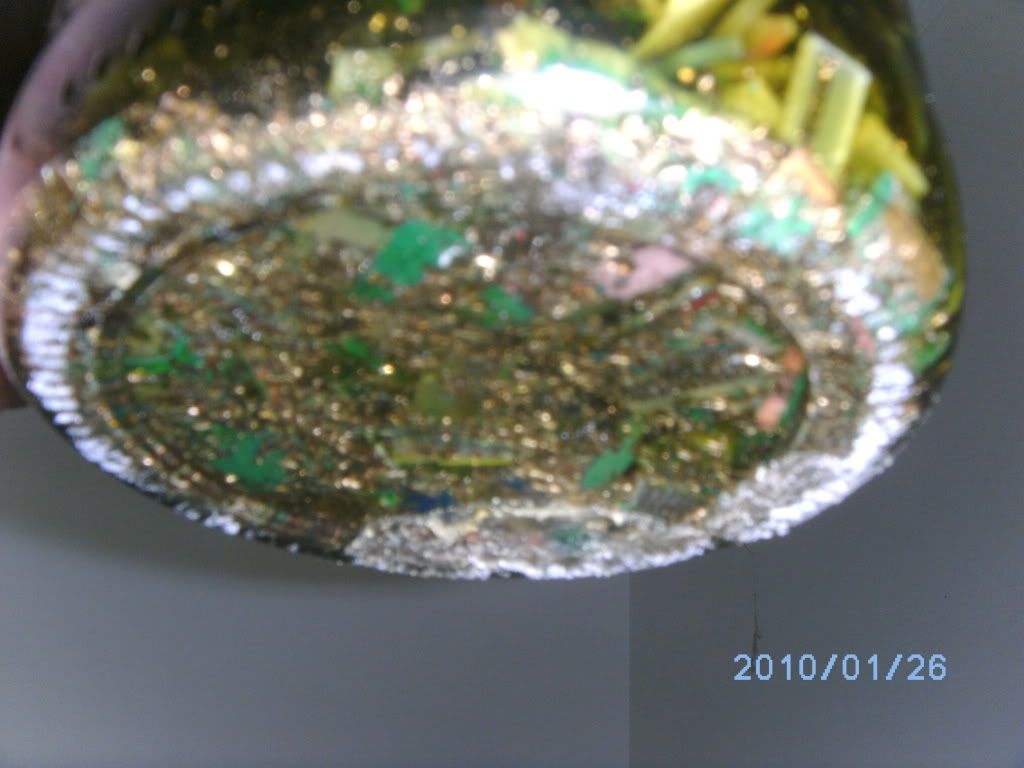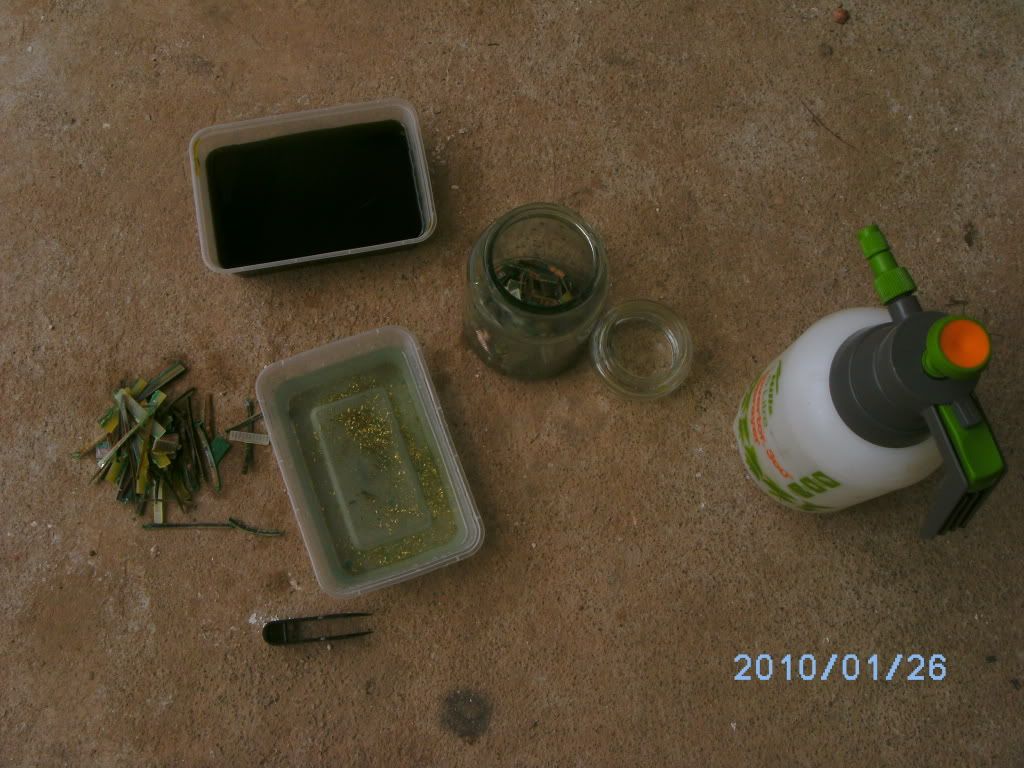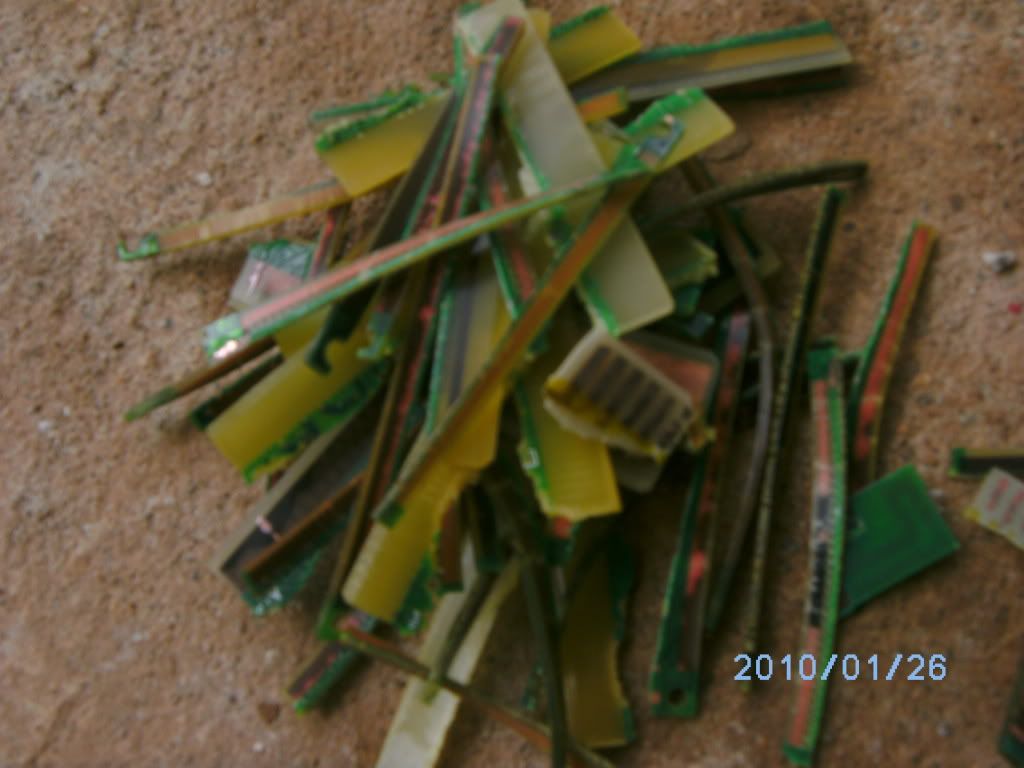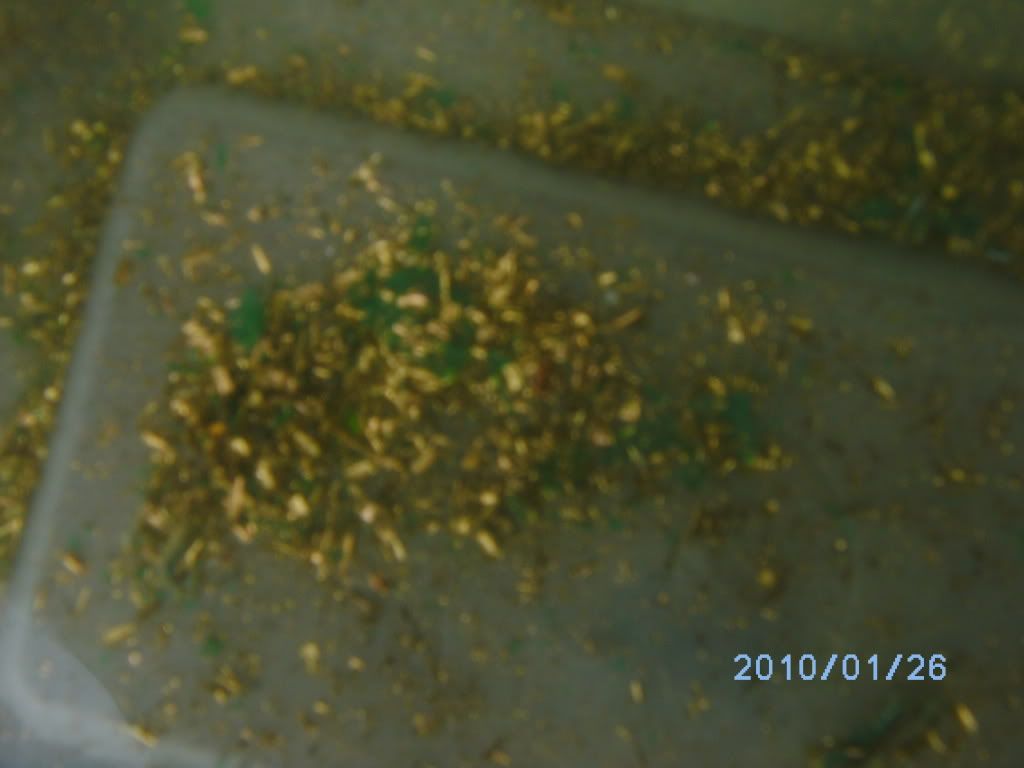Hello.
I stripped around 20 motherboards to play with, I removed all the pins with a blow torch and other various parts.
As a test i pried out around a handfull of pins from the plastic surrounds, There was still a fair amount of solder left on them. I read the the solder could be removed with HCI so i got a glass jar and pored in some HCI about 20min later ild say most near all the solder was gone. Though the pins look greay with no gold left. So i pulled out a few pins and gave them a rub to see if this was just a surface coating of solder and other metals.
Ild say that it was tarnished with the other metals, though what gets me is it seams that near all the gold has also been stripped, as i can see through it in most places and its nowhere near as shiney.
i dont get it how do i process these pins off the motherboard, and can they be processed in the plastic casings.
Sorry i know this would bound to be on the site though i can find it and am confused.
thanks
I stripped around 20 motherboards to play with, I removed all the pins with a blow torch and other various parts.
As a test i pried out around a handfull of pins from the plastic surrounds, There was still a fair amount of solder left on them. I read the the solder could be removed with HCI so i got a glass jar and pored in some HCI about 20min later ild say most near all the solder was gone. Though the pins look greay with no gold left. So i pulled out a few pins and gave them a rub to see if this was just a surface coating of solder and other metals.
Ild say that it was tarnished with the other metals, though what gets me is it seams that near all the gold has also been stripped, as i can see through it in most places and its nowhere near as shiney.
i dont get it how do i process these pins off the motherboard, and can they be processed in the plastic casings.
Sorry i know this would bound to be on the site though i can find it and am confused.
thanks

































































